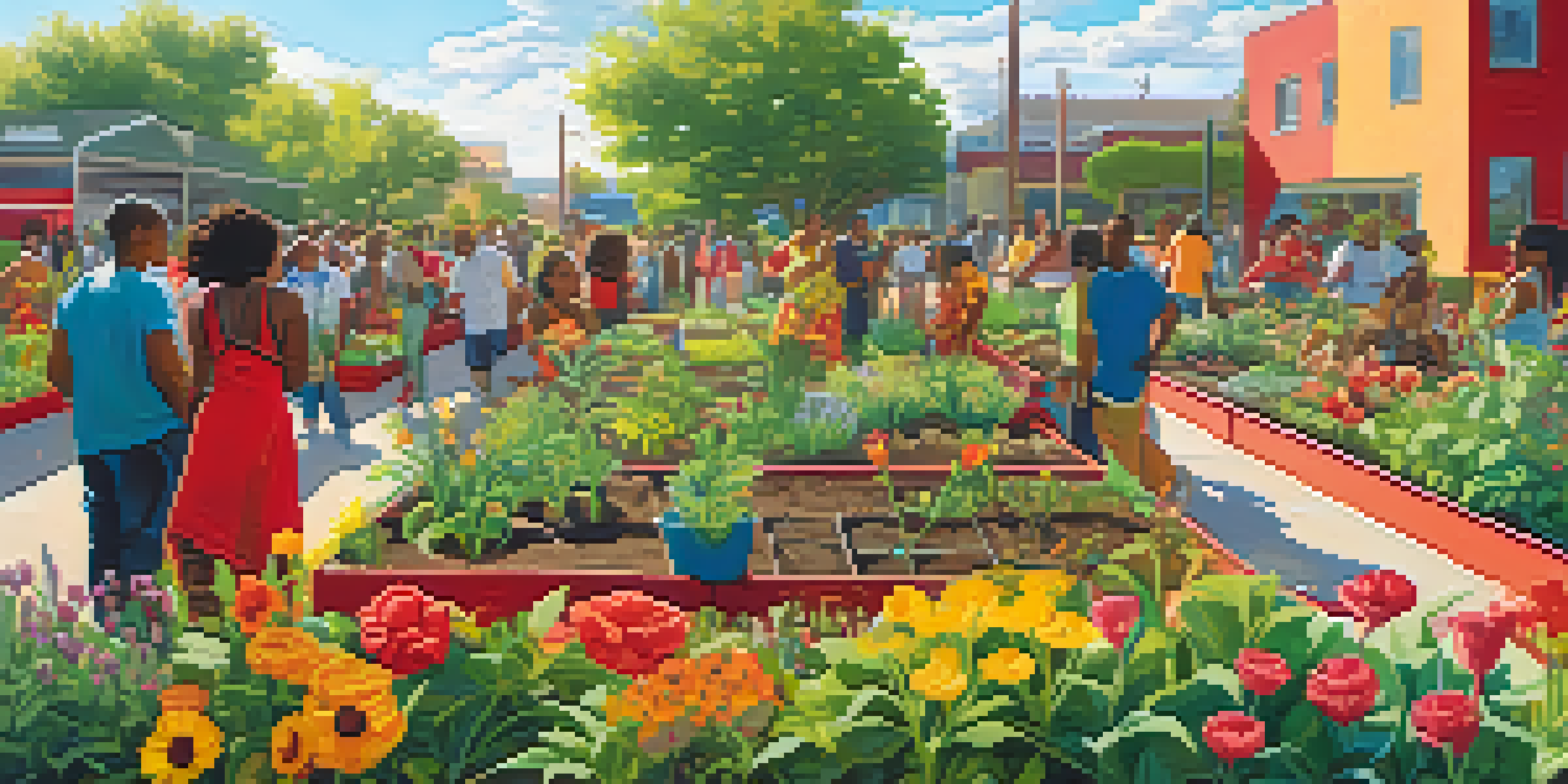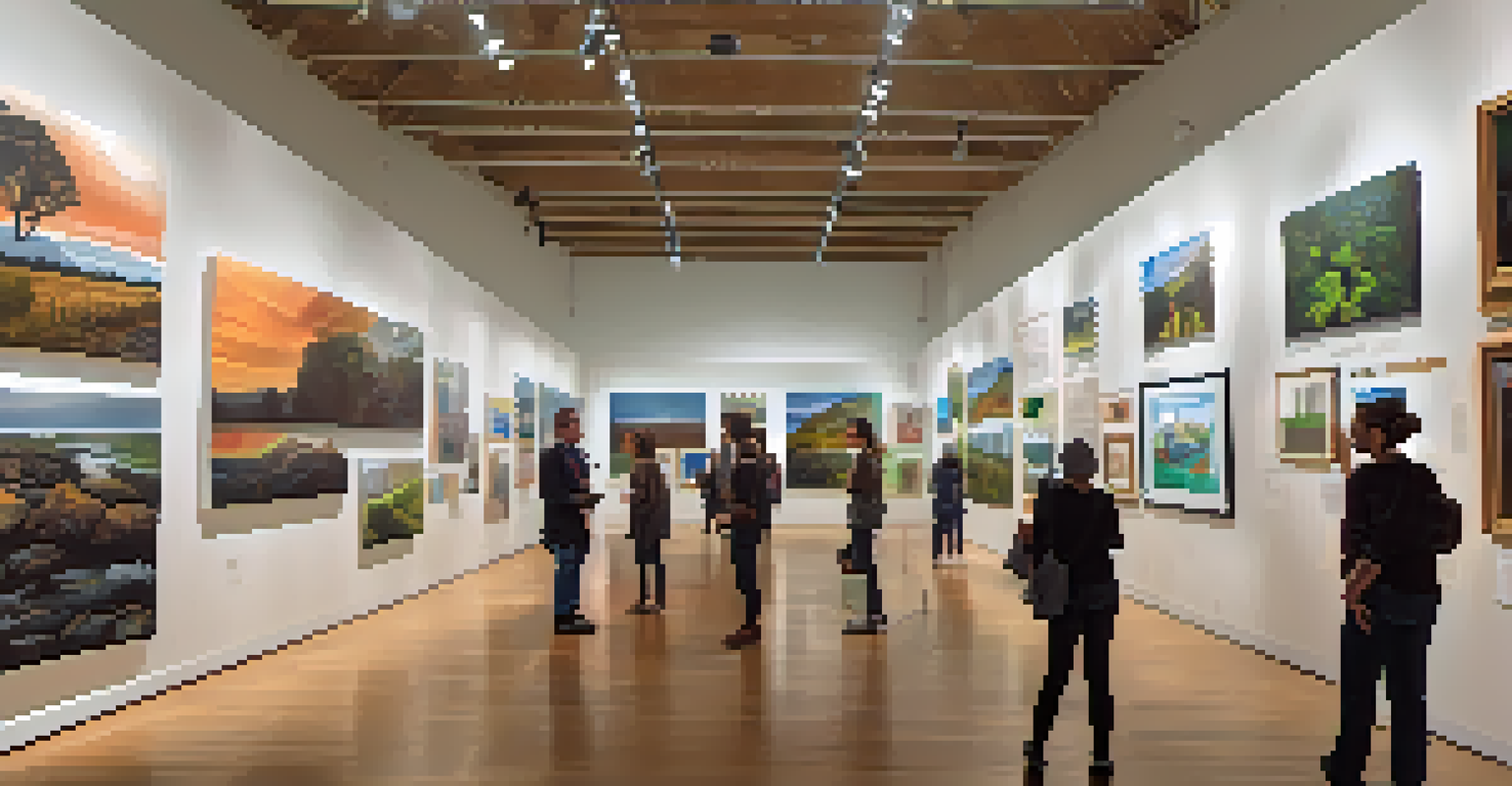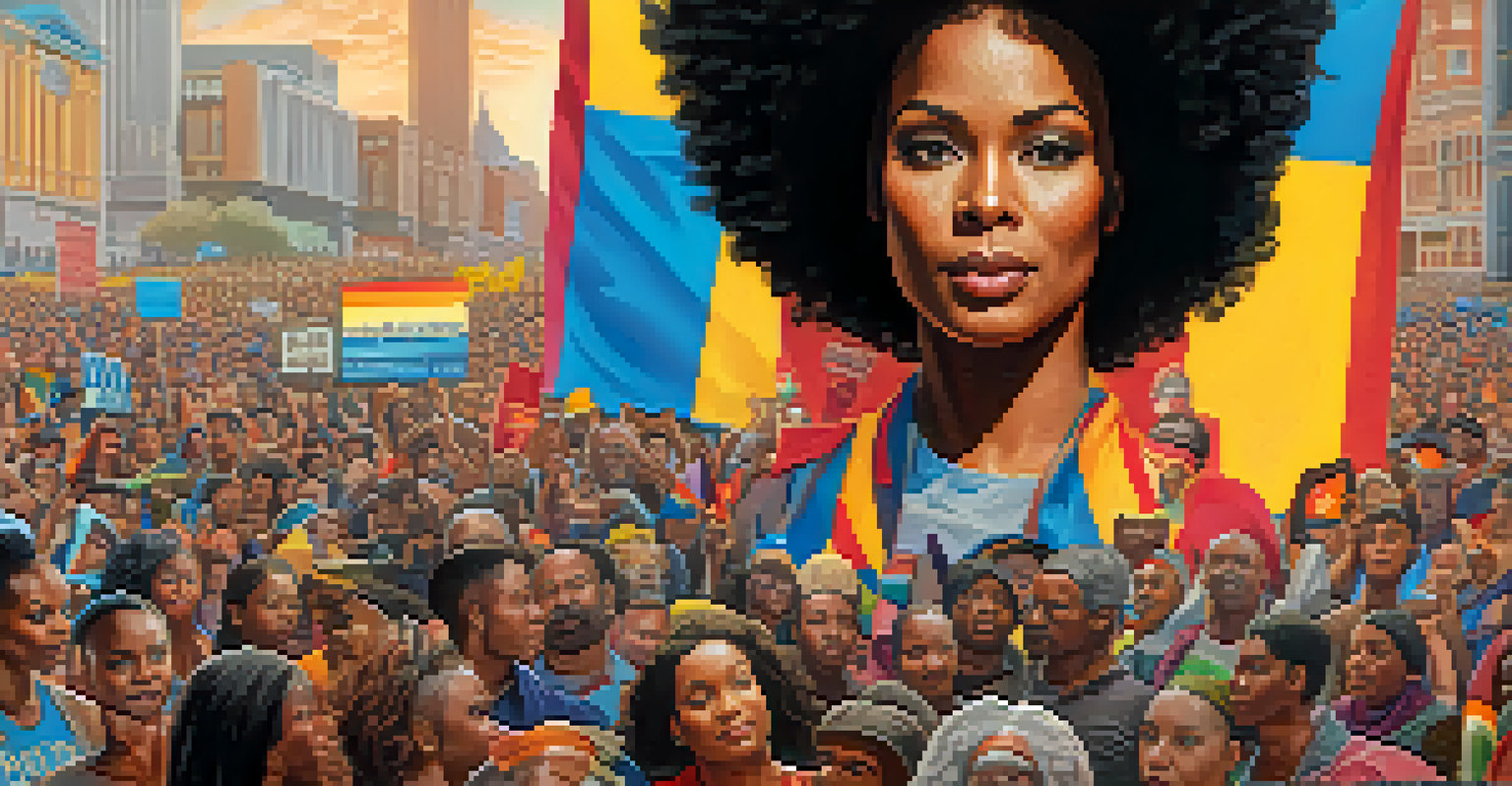The Intersection of Art and Activism in Today's Painting Scene

Understanding the Role of Art in Social Change
Art has always been a powerful tool for social commentary and change. Historically, artists have used their canvas to reflect societal issues, challenge norms, and inspire action. In today's world, we see a resurgence of this dynamic relationship, where painting becomes a medium for activism, addressing pressing issues like climate change, racial injustice, and gender equality.
Art is the most beautiful of all lies.
For instance, many contemporary painters create works that provoke thought and encourage dialogue around these themes. They often incorporate elements that resonate with viewers on a personal level, making the artwork not just visually appealing but also emotionally impactful. This connection can motivate viewers to engage with the cause represented, bridging the gap between art and action.
As the lines between art and activism blur, it's essential to recognize the responsibility artists carry. They hold the power to influence public opinion and can galvanize communities to rally for change. This responsibility adds depth to their work, transforming traditional painting into a vehicle for advocacy.
Key Artists Merging Art and Activism
Several artists have emerged as pivotal figures in this intersection of art and activism. For example, Ai Weiwei, a Chinese contemporary artist, uses his art to confront social issues and governmental oppression. His installations often draw attention to human rights violations, prompting viewers to reflect on their own societal structures.

Similarly, Kehinde Wiley, known for his vibrant portraits, challenges traditional representations of power and race. By featuring people of color in poses typically reserved for historical figures, Wiley’s work reclaims narratives and invites conversations about identity and representation. His pieces resonate with many, making them not just art but statements of activism.
Art as a Catalyst for Change
Artists use their work to reflect societal issues and inspire action on critical topics like climate change and racial injustice.
These artists exemplify how the personal and political can intertwine through painting. Their works serve as a reminder that art can transcend aesthetic value, becoming a catalyst for social change and awareness.
The Impact of Social Media on Art Activism
In the digital age, social media has revolutionized the way artists share their work and messages. Platforms like Instagram and Twitter allow artists to reach a global audience instantly, amplifying their voices and causes. This accessibility has transformed the landscape of activism in art, enabling movements to gain traction at an unprecedented speed.
The role of the artist is to ask questions, not to answer them.
For instance, many artists use hashtags to promote their work and engage with social issues, creating a community of supporters and advocates online. This virtual space not only provides visibility but also fosters collaboration among artists and activists, leading to multifaceted campaigns that resonate widely.
However, this new medium also presents challenges. The rapid pace of social media can sometimes dilute messages or lead to appropriation of causes without genuine engagement. Artists must navigate this landscape carefully, ensuring their activism remains authentic and impactful.
Art Exhibitions as Platforms for Activism
Art exhibitions are increasingly becoming platforms for activism, showcasing works that address social issues directly. For example, exhibitions focused on climate change often feature pieces that highlight environmental degradation, inspiring viewers to reflect on their role in the crisis. These spaces create opportunities for dialogue, encouraging discussion about solutions and actions.
Moreover, collaborative exhibitions, where multiple artists contribute to a central theme, can amplify messages and unify efforts. By pooling resources and creativity, artists can create a more considerable impact, making their activism more visible and compelling. This collective approach also fosters a sense of community among artists and audiences alike.
Community's Role in Activism
Local artists engage their communities through projects that foster dialogue and collective expression, empowering shared voices.
From galleries to public spaces, exhibitions serve as vital touchpoints for activism. They challenge viewers to confront uncomfortable truths and stimulate critical thinking, ultimately driving social change through the power of visual art.
The Role of Community in Artistic Activism
Community plays a crucial role in the intersection of art and activism. Local artists often engage directly with their communities, using their work to reflect shared experiences and struggles. This connection not only enriches the art but also strengthens the community's voice, fostering a sense of belonging and empowerment.
Community-driven projects, such as murals or collaborative installations, create spaces for dialogue and collective expression. They allow individuals to share their stories and perspectives, transforming public spaces into canvases for social commentary. These initiatives can ignite movements, rallying communities around a common cause.
Ultimately, the relationship between art and activism is deeply rooted in community engagement. By harnessing the collective power of voices, artists can elevate messages that resonate widely, ensuring that their activism is both relevant and transformative.
Challenges Facing Activist Artists Today
While the intersection of art and activism presents exciting opportunities, it also comes with significant challenges. Many artists face backlash or censorship when addressing controversial issues, particularly when their work critiques governmental policies or societal norms. This pressure can stifle creativity and limit the scope of expression.
Additionally, funding can be a barrier for activist artists. Pursuing projects that address social issues often requires resources that may not be readily available. Crowdfunding and grants can provide some support, but artists must continually seek ways to finance their work while remaining true to their mission.
Challenges for Activist Artists
Activist artists face backlash, censorship, and funding challenges, yet many persist in their mission to drive social justice through art.
Despite these obstacles, many artists persist, driven by a passion for change and the belief that their work can make a difference. Their resilience is a testament to the enduring power of art as a form of activism, inspiring others to continue fighting for social justice.
The Future of Art and Activism in Painting
Looking ahead, the future of art and activism in painting appears bright yet complex. As societal issues evolve, so too will the themes and methods used by artists to express their activism. Emerging technologies, such as virtual reality and augmented reality, may provide new avenues for engagement, allowing artists to create immersive experiences that resonate on a deeper level.
Moreover, as global movements gain momentum, we can expect to see more artists collaborating across borders, creating a rich tapestry of perspectives and ideas. This international dialogue can enhance the impact of their work, highlighting the interconnectedness of various social issues.

Ultimately, the intersection of art and activism will continue to be a vital space for expression and change. As artists push boundaries and challenge conventions, they will inspire future generations to harness the power of creativity in the pursuit of social justice.